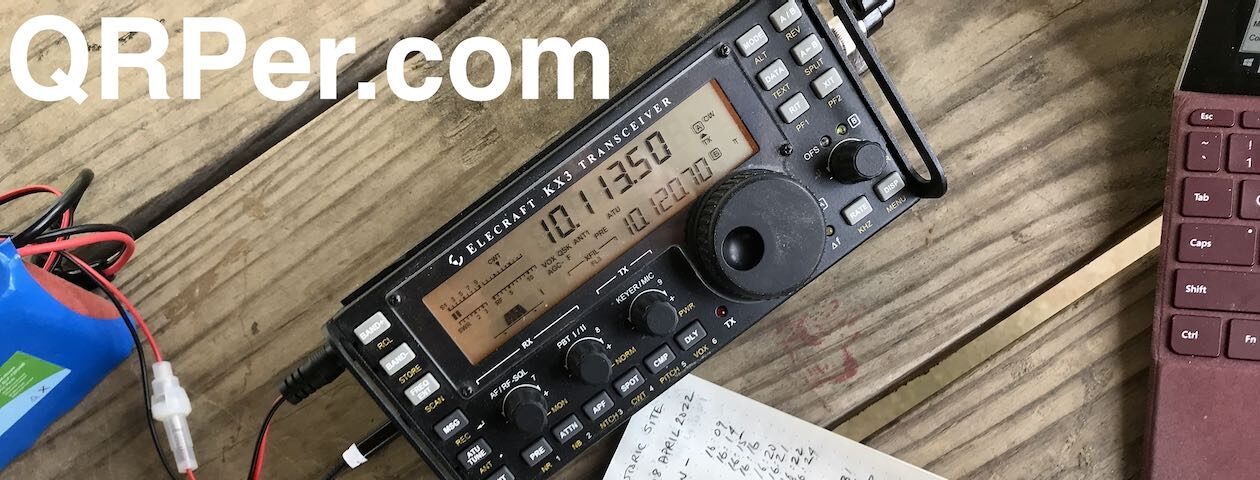Sometimes you need a break. My sweetie Glenn W4YES booked two Airbnbs, one in North Carolina and one in South Carolina, the second weekend in October as my son’s school was on break for four days. Anyone who knows me will tell you I am a planner. However, it was a nice surprise for me to NOT plan this trip. Glenn picked out the places to stay as well as scouted nearby potential POTA sites. My job was to show up and enjoy the surprise.
Our first two nights were at a property between Uwharrie and Troy, North Carolina. This property borders the Uwharrie National Forest (US-4511). All I had to do for a POTA activation was walk out our front door to the road on the mountain and continue a short distance uphill where the national forest property begins. The road continues past a locked gate to the Buck Mountain Fire Tower, the highest point in the area.


Saturday is my day off from everything including ham radio. However, Glenn and I took a leisurely paced walk to the fire tower just to check it out.

The Buck Mountain Fire Tower was built in 1936 and is likely the work of the Civilian Conservation Corps. Given the narrowness of the stairs, it is obvious the structure was not built in modern times. The tower base is covered in chain-link fencing but the metal door into the tower base area to access the tower stairs, is not locked.
We returned to the tower at sunset to climb it . You cannot access the top floor as it is padlocked. But one can see for miles from the stair platform below the top floor. The sliver of color on the horizon as the sun dipped below was worth the climb to the top.


Not being one to squander an opportunity for POTA, the next morning I woke at 6 AM and was out the door at 6:45. Light was just beginning to show in the sky. The walk up to the fire tower was not that difficult despite having a backpack of POTA and camera gear and gaining 152 feet in elevation. This is why I walk the stairs at a local parking garage two days a week – so I am not unprepared for some elevation change.
I arrived at the fire tower right before sunrise and had the site to myself! As I figured out where to set up, I thought to myself no one was likely to hear me due to the tall, large metal structure with antennas in front me. In fact, I didn’t bother setting up any video equipment.

I chose a spot off to the side of the tower with my back to the woods so I could see anyone coming up the access road . (When you are a woman alone in the woods, you have to think of such stuff.) I opted for the Chelegance MC-750 as there was not much time to operate. I set the Chelegance for 40 meters. The sun was just beginning to rise (7:24 AM) so I figured 40 would be a better band given the early hour.


I settled into my Helinox chair with a blanket wrapped around my legs (the temp was 49 degrees – cold for this Georgia girl), spotted myself (cell service at a POTA site is always a plus!), and steeled myself for a failed activation. If I encounter noise when I do POTA, it is almost always on 40 meters. I figured with the antennas on site and the large metal object in front of me, no one would hear my QRP signal and there would be too much noise for me to hear anyone who did happen to respond to my CQ. I couldn’t have been more wrong!

There was noise on the band but not nearly as bad as I anticipated, partially due to the great filters on the KX2. There was a pulsing noise at 7.056 and some sort of signal on 7.054, but 7.049 was clear. It wasn’t long after spotting myself that Ronny WB2MQQ answered my CQ. That began a steady stream of calls over the next hour. The signal I heard originally on 7.054 moved to 7.049 about 25 minutes into the activation so I switched to 7.054 when it vacated that frequency.

At 8:27 AM, I called QRT because Glenn and I had plans to meet old college friends in Charlotte later that morning. I had 39 contacts at a location I was certain would result in none! It just goes to show you never know what the bands or a location will give you. Better to set up and try than quit before you start, right?

We had a pleasant drive to Charlotte. Glenn met his friend Mike and I, my friend Jennifer. (I call her Jennaboo and she calls me Teridactl.) Afterwards, satiated from lunch, conversation, and laughter, we headed southward into South Carolina for my next activation. Where? Stay tuned…

P.S. Want to get to know Glenn and I a little better? Check out my video from our stay near Uwharrie National Forest on YouTube:
Equipment Used
[Note: All Amazon, CW Morse, ABR, Chelegance, eBay, and Radioddity links are affiliate links that support QRPer.com at no cost to you.]











































